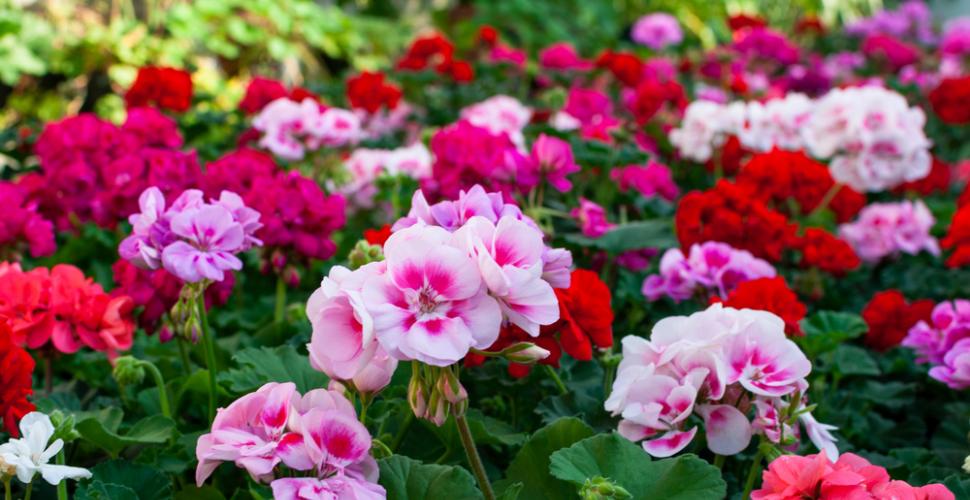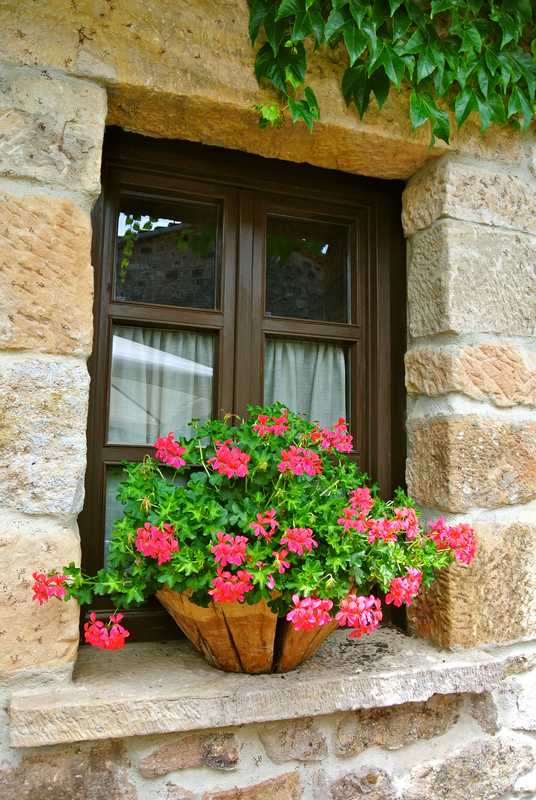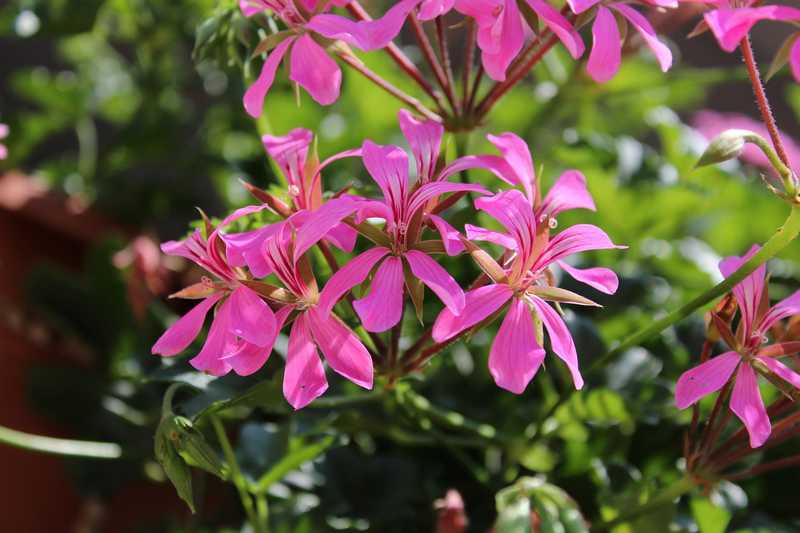
Easy to succeed and very decorative, the ivy geranium blooms generously all summer in planters placed on a window sill or hung on railings. But it also likes suspensions or in large pots. This chilly perennial well deserves its nickname of ivy geranium, king of the balconies .
What there is to know :
Botanical name: Pelargonium peltatum
Common name : Ivy geranium, King of balconies
Family : Geraniaceae
Type: Perennial, but generally grown as an annual.
Height : The branches spread out over 40 to 50 cm in length.
Foliage : Its flexible and drooping branches are covered with fleshy leaves, of a pretty shiny green, reminiscent by their shape of those of ivy.
Flowers : Arranged in groups, the flowers are single, semi-double or double. They offer a large choice of colors and bloom from May until the first frosts.
Exposure : Full sun.
Soil : A rich mixture of garden soil and quality potting soil.
Hardiness : 0°C, The ivy geranium fears the slightest frost.

When and how to plant ivy geranium?
Plant your ivy geraniums in the spring , between the end of March (under cover) and June.
Pot planting : Choose a pot or a pierced terracotta cup. Place a layer of gravel at the bottom to improve drainage, then fill with a mixture of half good garden soil and half quality horticultural soil.
In a cut of 20 cm in diameter, 3 plants can be installed.
Planting in the ground : You can plant a few ivy geraniums in the ground in beds of annual flowers or along the edge of perennials in order to densify the blooms. The branches of the ivy geranium then crawl on the ground. Mix the soil at the bottom of the hole with a little compost and a small handful of dried blood.
The color palette is very rich. To succeed in your combinations, alternate a maximum of 2 colors that go well together such as pale pink ivy geranium and salmon, or create strong contrasts with, for example, red ivy geraniums and white others.
Two-tone varieties of ivy geraniums are planted alone.
How to maintain the ivy geranium?
In order to bloom well, the ivy geranium needs regular maintenance (watering, cleaning faded flowers, etc.). But it tolerates rain, summer storms and temporary drought very well.
Watering : Water every day or every 2 days with water at room temperature, without excess and without wetting the foliage in order to avoid the appearance of diseases.
Then empty the saucer, do not let water stagnate in it.

Fertilizer: Bring a liquid fertilizer diluted in the irrigation water once a week , respecting a fixed day.
The ivy geranium is greedy: it flowers more generously if the soil is rich! As soon as you plant, you can enrich the mixture of soil and compost made by adding a little dried blood.
Cleaning ivy geraniums : Remove faded flowers as you go ; you will favor the appearance of new flowers and avoid the formation of seeds which unnecessarily exhaust the plant. Cut the stems carrying the flowers at their base by pulling lightly with your fingers or by cutting them with a pair of scissors.
Also remove the dry and most damaged leaves.
How to keep ivy geraniums in winter?
Ivy geraniums do not tolerate the slightest frost , but they can be kept from one year to the next if:
You have a greenhouse or a bright garden shed frost-free (5°C) to facilitate their wintering .
Or, in a mild climate, if you group them together from the end of October to April at the foot of a south-facing wall. Then make a shelter with wood and thick plastic or bubble wrap to keep them frost-free.
In any case, water them very little in winter .

When and how to cut the ivy geranium?
Prepare your geranium cuttings from mid-May to the end of September. Here are the steps to follow:
- Use pruning shears to cut off a well-swollen branch just below the petiole of a leaf.
- For greater success, the cutting must be healthy, without traces of aphids or diseases such as rust. It should measure about 10 cm in length and its diameter should be as large as possible.
- Remove the leaves and buds located at the base. With pruning shears, also cut off any branches.
- Also remove the flowers, their stems and the last leaves. Only one or two young leaves located at the end should be kept.
- At the base of the cutting, it is also necessary to remove the stipules. These small organs look like leaves.
- Dip the base of the cutting, barely moist, in a cup of rooting hormone. Tap to remove excess powder.
- Prick several cuttings near the edge of a terracotta pot filled with horticultural soil or individually in a bucket.
- Water copiously from the neck of the watering can, then cover the pot with a bell or transparent plastic. Then water regularly to keep the soil fresh, without excess water.
Place your cuttings outside in the shade for the first few weeks. Under these conditions, the roots generally appear within 15 days.
In October, install the young plants in a very bright room where the temperature does not drop below 5°C. Reduce watering.
